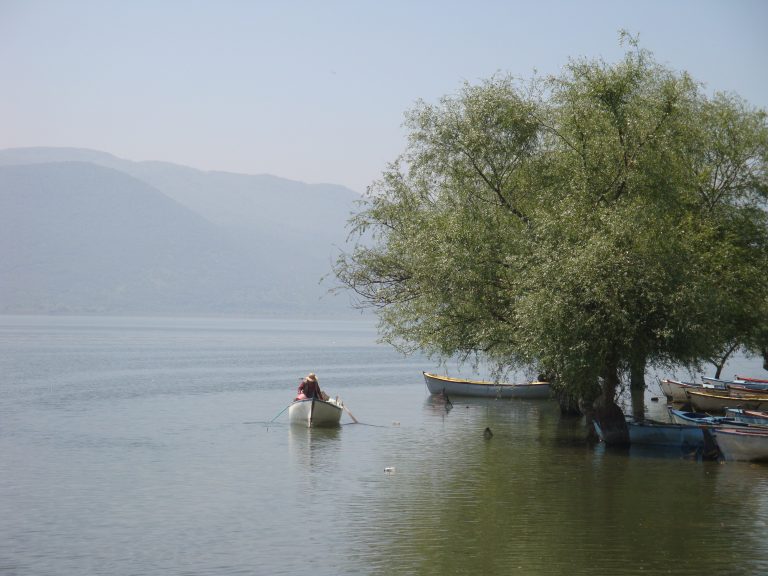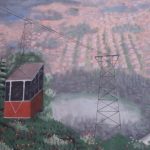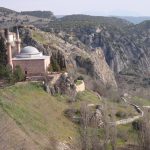Lake Uluabat’s Little Eğirdir Population: 1,300
Old names: Apollonia ad Rhydacum, Apolyont
Market day: Fish market daily at noon
A pinprick of a place on the eastern side of a 135-sqm lake west of Bursa, Gölyazı, the site of the ancient Apolyont, doesn’t even show up on many maps. It sits on a tiny island joined to the mainland by a causeway and your first thought will probably be that it’s like a miniature version of Eğirdir in the Turkish Lake District just without the mountainous backdrop.
The lake itself is exquisitely beautiful, its shores surprisingly unspoilt, its waters still and quiet, making this a perfect place to come if you want to throw off the stresses of city life. Not surprisingly, most of the locals make their living out of fishing with a twist of weekend tourism on the side.
Gölyazı is overwhelmed with visitors over summer weekends; you’d be well advised to time your trip for midweek when you’ll be able to appreciate the wonderful peacefulness undisturbed.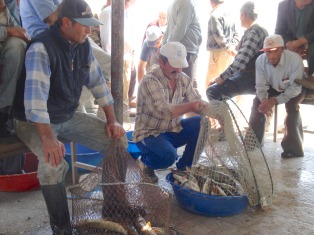
Of course nothing beats taking to the lake. There are a few rowing boats for hire on the mainland. Alternatively you’ll probably be able to persuade one of the fishermen to take you out in their boat with them.
Ancient Apolyont
Apolyont actually seems to have started life as Apollonia ad Rhydacum, taking its name from what was then known as the Rhydacus and is now the Mustafakemalpaşa river.
It was settled by colonists from Miletus some time around 700 BC although by the second century BC it formed part of the kingdom of Pergamum (Bergama). Later inevitably it fell to the Romans, and was probably visited by the Emperor Hadrian in 124 after a major earthquake devastated the area.
There’s not much left of Apolyont today although it’s still worth checking out the scattered ruins that start as soon as you arrive at the edge of the modern village on the mainland. From these it’s obvious that this would once have been a walled settlement with defensive towers (there’s one surviving in the schoolyard) and gates to admit visitors. The walls continued onto the island, although some of what you see today probably stems from a Byzantine rebuild.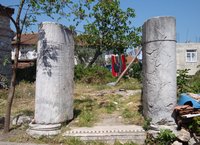
The most substantial remains are gathered around the over-sized modern mosque on the island where several lengths of wall still survive. The most interesting are on the water side of the mosque where stones carved with garlands and bull’s heads line up above a lengthy Greek inscription.
Otherwise as you wander around the island you need to keep your eyes peeled for pieces of pillar and the odd reused capital that evoke long-lost buildings. Most of the stones are collected around the small early Ottoman mosque at the highest point of the island, suggesting that the Romans and then the Ottomans in turn homed in on the same strategically important location to form the centrepiece of their towns. In all probability there was a temple to Apollo very close to where the mosque stands today.
Around the island
Pretty as it is, Gölyazı is no undamaged mini Safranbolu. The battered remains of older houses suggest that it must once have boasted many properties whose stone-built ground floors were topped off with wattle-and-daub or patterned brickwork. But nowadays most such imposing houses have given way to the usual mish-mash of concrete-built homes although here on the island their brightly coloured facades and the proud line-ups of potted plants give them a certain charm that they might not have elsewhere.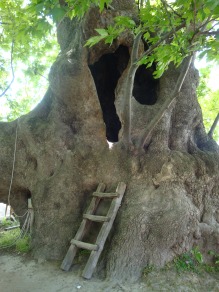
As you wander round the streets virtually every local will probably take it upon themself to welcome you to the island.
Gölyazı is also a paradise for bird-watchers. In spring the most conspicuous birds are the storks who’re busily tidying up the ramshackle nests that perch on every telegraph pole while sparrows freeload in the twigs beneath them. Elsewhere the trees will be alive with the twittering of goldfinches, while swallows will be returning to mud-built nests beneath the eaves. Later, pelicans will also arrive to join the cormorants and terns fishing in the lake. Rare pygmy cormorants also nest here amid the beds of reeds and white water lilies.
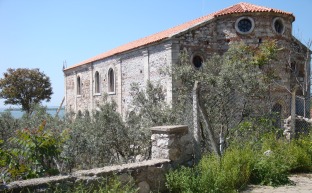 Around the mainland
Around the mainland
The island is the real reason to come to Gölyazı. However, the tourism signs home in on the Ağlayan Çınar (Weeping Plane Tree), an enormous tree, said to be more than 700 years old, that sits beside the causeway across to the island, a small wooden ladder permitting access to the hollow inside its trunk.
You might also want to take a quick look at the large 19th-century brick and stone Church of St Michael on the mainland that was abandoned in 1924 when the local Greek population was forced to leave Turkey. The European Union supported restoration of the church as part of a wider project to help develop sustainable tourism here.
If you walk through the cemetery behind it you will be able to inspect the rear of the church as well as a collection of old Ottoman tombstones, some topped off with stone fezes.
Sleeping
It would be lovely to sleep by the lake but unfortunately there are no hotels in Gölyazı. Your best bet is probably to stay in Bursa where there are hotels in all price brackets.
Transport info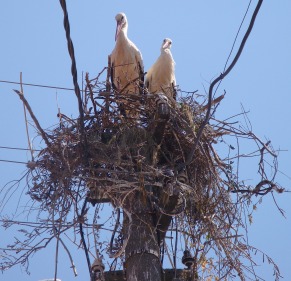
To get to Gölyazı from central Bursa take Line 2 of the Metro to Küçük Sanayi. From there there are direct buses roughly every two hours from 8am, with the last bus back from the lake at 8pm (at least in summer).
Alternatively, you can take a bus towards Karacabey and get out at the junction with the road to Gölyazı. It’s a five-km walk to the lake.
Day trip destinations
